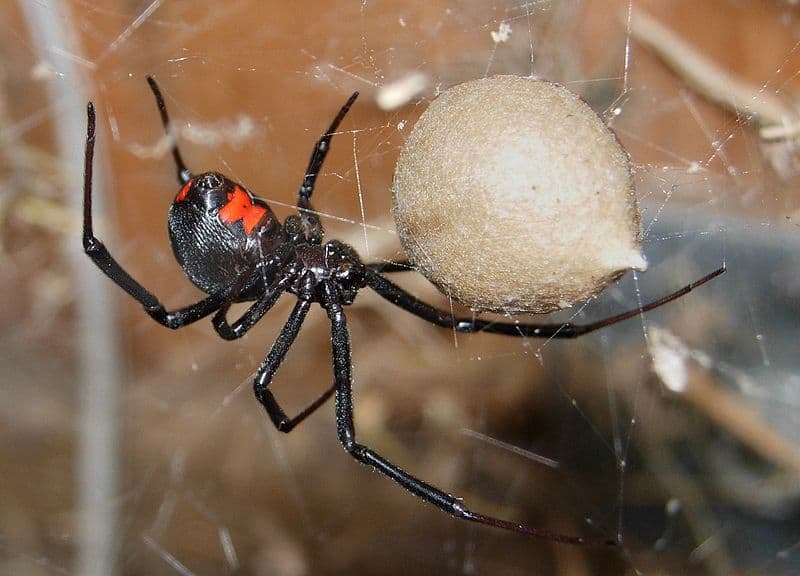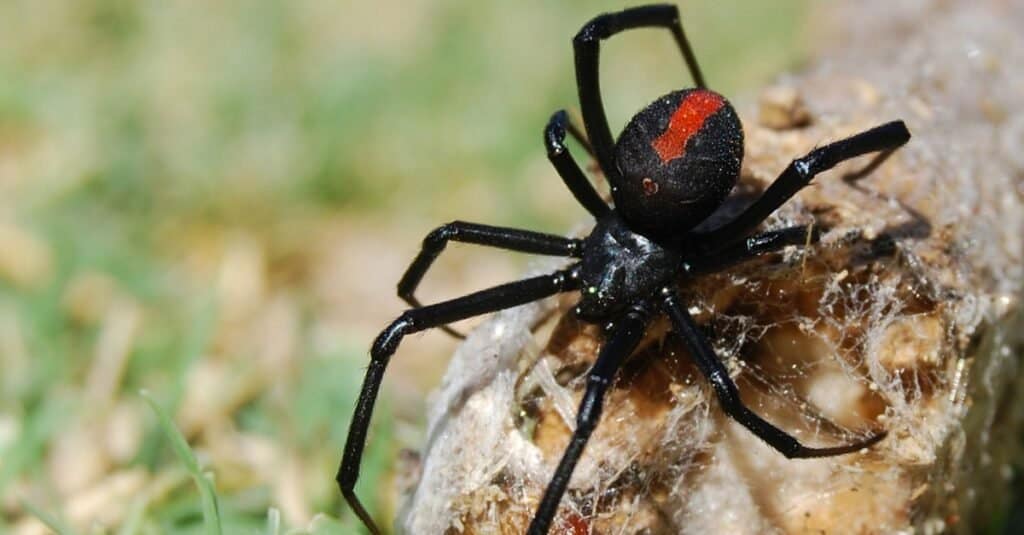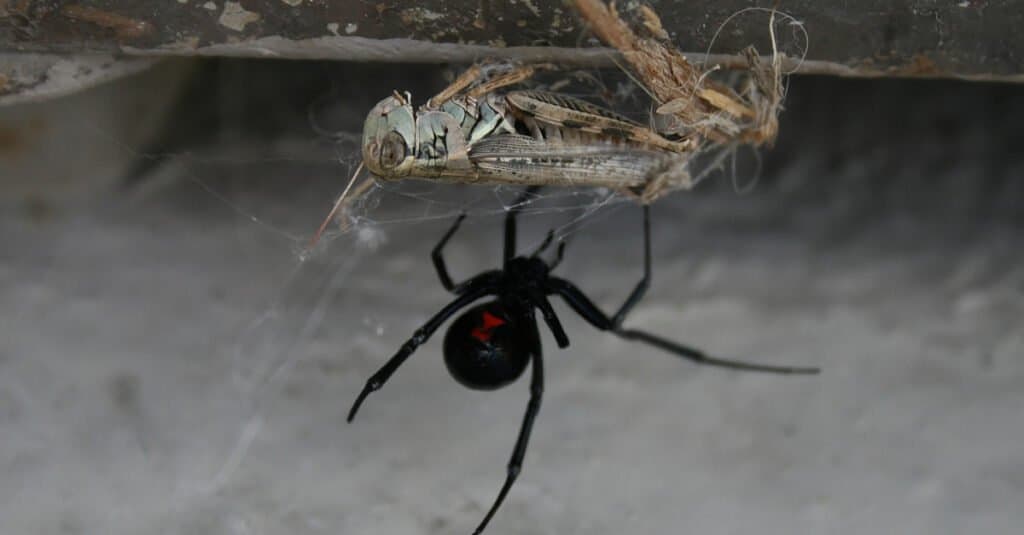Black widow spiders have a deadly reputation. Their scientific name is Latrodectus which comes from the Latin word “latro,” meaning “bandit,” and the Ancient Greek word “dēktēs,” which means biter.
So, their name translates as “bandit who bites!” The name black widow comes from the fact that females sometimes eat males after mating.
This unique footage was recorded in Texas and shows the moment when a black widow spider captured a snake in its web. Yes, a snake!
Click The Video Link Below For Full Footage
Black Widow Spiders Are Amazing

Black widow web silk is amazingly strong and elastic
©Chuck Evans(mcevan)”./ CC BY 2.5, via Wikimedia Commons – License
However you feel about spiders, and some people like them more than others, you cannot help but be impressed by the black widow spider. On the face of it, they don’t look that special.
The female black widow is around 1.5 inches long and the male is half that. The females are a shiny black color, with a red-orange hourglass pattern on their abdomen. The males are brown or gray with small red spots.
However, these spiders have populated most of the world, they have venom that is strong enough to kill a dog and spin webs as strong as steel.
So, let’s look at that in a little more detail.
Is It Normal Behavior For Black Widows to Eat Snakes?

Black widows have stronger venom than rattlesnakes. It isn’t as deadly because it’s injected in smaller amounts.
©iStock.com/maria72
Black widows primarily feed on insects, as well as other spiders. However, their diet can extend to small vertebrates like snakes and lizards. So, while it’s odd to see a spider eating a snake, it does happen. In fact, the toxicity of a widow spider’s venom surpasses that of rattlesnakes.
To clarify, widows are smaller so their venom is less deadly to humans. Black widow venom is simply injected in smaller quantities than a rattlesnake.
Furthermore, mating is notoriously deadly for these arachnids, particularly the males. In species such as the black widow and redback, the larger females often engage in cannibalism.
This involves devouring the smaller males during the mating process, elucidating the origin of the “widow” in their names.
Venom And Web Of Black Widow Spiders

A black widow’s venom contains an alpha-larotoxin which is used to subdue prey.
©Crystal Kirk/Shutterstock.com
Black widows use their venom to defend themselves and to subdue and consume prey (such as flies, ants, and grasshoppers) as this snake is, unfortunately, finding out! The venom contains an alpha-larotoxin which is powerful – 15 times stronger than a rattlesnake. But because they are so small, they only deliver a small amount and so it is rarely fatal for humans.
It is very unpleasant though! It causes swelling and a lot of pain and medical attention is needed. Only adult females will bite you – the males’ mouthparts are not strong enough to do so. Black widows kill more snakes than any other type of spider and they typically target small, young snakes that have gotten stuck in their webs.
Black widow webs are awesome! The web silk is several times stronger than that spun by other spiders. It is the same durability as Kevlar which is a synthetic fiber used to make bulletproof vests! Their cobweb is made up of support scaffolding in the middle and a series of silk anchor lines that hang down. There are two types of silk used in the web and one will stretch 25% of its length before breaking!
The photo featured at the top of this post is © Jay Ondreicka/Shutterstock.com
Thank you for reading! Have some feedback for us? Contact the AZ Animals editorial team.






